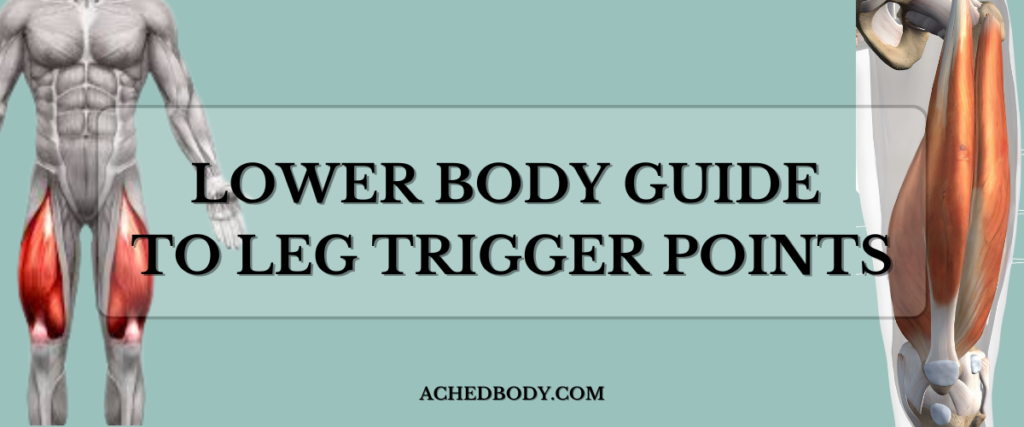
Trigger Points in the Legs: An Essential Guide to Lower Body Muscle Pain
From thigh tension to stubborn calf cramps and hamstring soreness, many people experience chronic leg pain without knowing the root cause.
One of the most overlooked culprits? Trigger points—tiny, tight knots in your muscles that can send pain far beyond their source.
In this article, we’ll explore two main things:
– The most common leg muscle trigger point areas
– How to release them so you can move better, feel looser, and recover faster.
What Are Trigger Points?

Trigger points are hyperirritable spots within a band of muscle tissue called a fascicle.
They can be tender to the touch and cause localized pain or referred pain, which means the discomfort shows up in areas away from the actual source.
If you want to learn more about trigger points, check out this article!
In the legs, trigger points are especially common because of how much we rely on lower body muscles for walking, standing, running, lifting, and balancing.
Here are the different spots people find trigger points in their legs.
Most Common Trigger Points in the Legs
Quadriceps (Front of the Thigh)
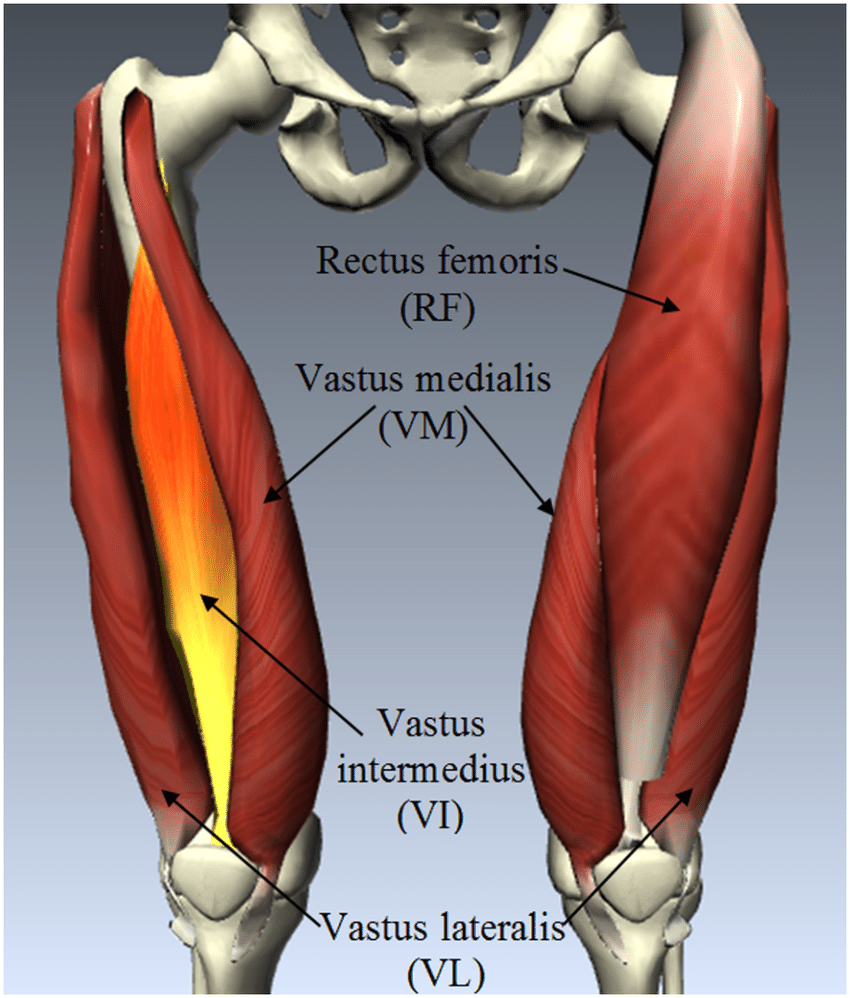
The quads are a hotbed for trigger points because they are responsible for straightening your knee and stabilizing your hip.
We use them in so much of our daily movement, and their muscle mass makes them prone to trigger points.
Here are some areas that flare up when your quads are too tight:
- Front of the thigh
- Inner or outer knee
- Around the kneecap
- In and around the hip socket
- IT band/outer leg
Check out our detailed article on trigger points in the quads for more.
Hamstrings (Back of the Thigh)
These muscles are overlooked most of the time, but they cross over the knee and hip joints making them important for a lot of movement.
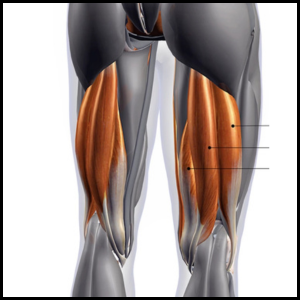
Trigger points can form from sitting too long, overuse or poor lifting form.
Here are some areas that flare up when your hamstrings are too tight:
- Back of the thigh
- Near the glutes
- Hip pain
- Lower back pain
- Behind the knee
- Outer and inner knee
Trigger points here often feel like a deep, aching tightness that doesn’t respond to stretching alone.
You can get the full hamstring trigger point breakdown here or get all the hamstring related content here.
Adductors (Inner Thigh)
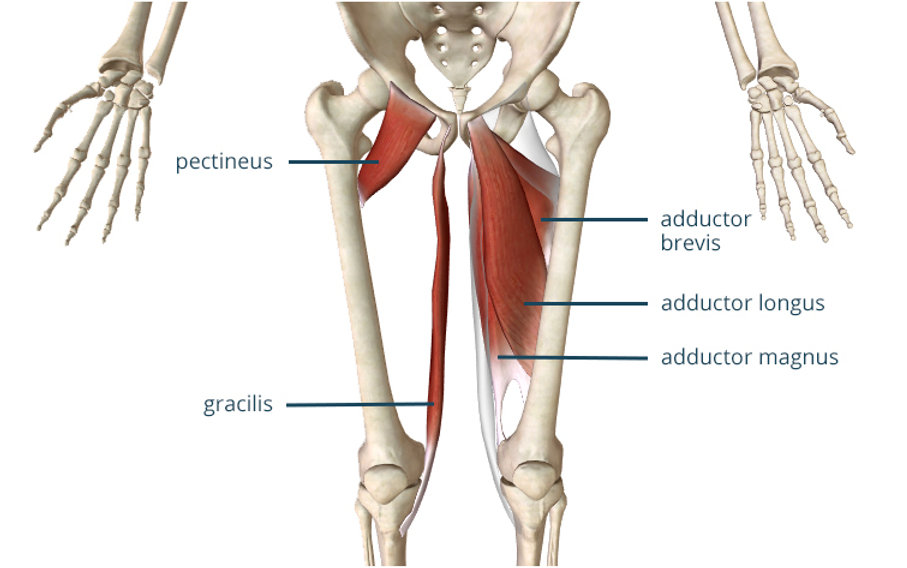
These muscles stabilize your pelvis and help pull your legs inward.
They’re commonly overused in sports or when the hips are unstable and are a common source of groin issues when untreated.
Here are some areas that can have issues when your adductors are too tight:
- Groin
- Upper inner thigh
- Sometimes the knee or hip joint
Adductor trigger points are often mistaken for hip or groin issues.
Learn more about them with my “Fix Your Adductors” guides (coming soon)
Calves (Gastrocnemius and Soleus)
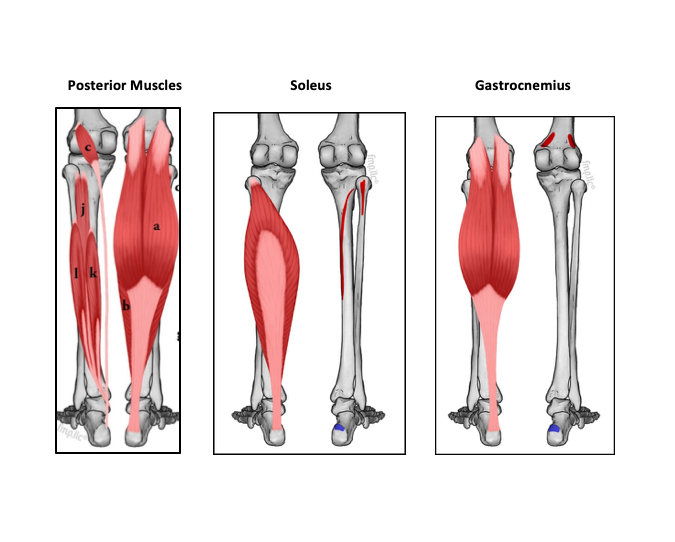
The calf muscles are involved in every step you take and play a key role in posture.
Calf trigger points can be sneaky so here’s where pain may show up if you have calf tightness:
- Knee pain
- All around the calf (obviously)
- Achilles tendon
- All around the ankle
- Bottom of the foot (especially with soleus and deep ankle muscle involvement)
If you’re dealing with plantar fasciitis or chronic foot pain, your calves might be part of the problem.
You can Fix Your Calves with all of my guides or go to the specific upper calf trigger point guide or lower calf trigger point guide for help.
Keep reading for some extra help with your feet.
Extra Areas For Leg Issues
I have additional guides made if you’re dealing with foot trigger points! Check them out here.
Coming soon – Hip Flexor Trigger Point Guide and Glute Trigger Point Guides
Signs You May Have Leg Trigger Points
If you have pain in any of the areas outlined above, it is probable that you have trigger points and muscle tightness that needs to be addressed.
Your muscles may even feel tight or knotted, even when resting.
Most people try stretching, but find that it only helps briefly. That could mean trigger point therapy is needed along with a better stretching plan.
Another sign is if specific spots in your muscle feel sore or tender to press. This would be a more extreme case, but I’ve had to address many of these myself.
You may also notice weakness or stiffness in the affected muscle, even though you haven’t injured it.
What Causes Trigger Points in the Legs?
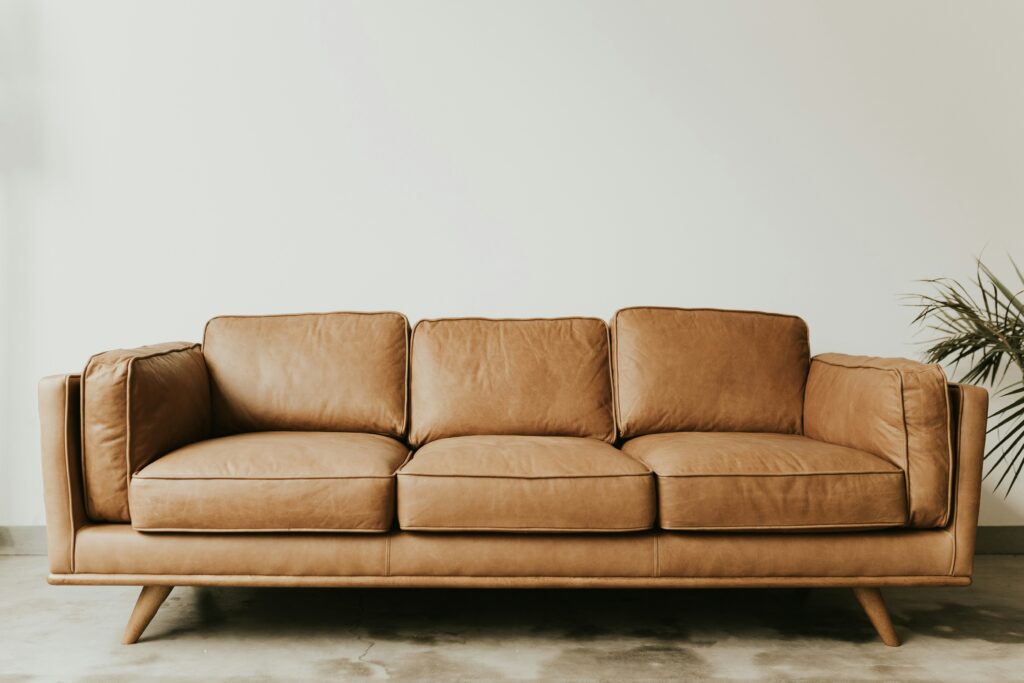
Here are the main causes of trigger points in the legs and in general:
- Repetitive stress
- Sedentary lifestyle, leading to muscle shortening
- Muscle imbalances, especially in hips and core
- Poor posture or walking mechanics
When muscles don’t get the support they need, trigger points can build up like hidden tension spots and become noticeable after they have progressed for a very long time.
How to Release Leg Muscle Trigger Points
The main ways you can fix your lower body is with corrective exercise and the myofascial therapies listed below!
Stretching
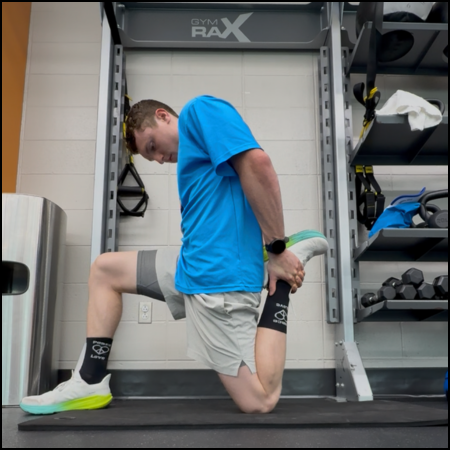
I think this one is pretty obvious. Most people know that stretching is good for you, but you may not know exactly why.
Pairing a targeted stretch after rolling or trigger pointing a specific area of the body allows the muscle to relax easier into a longer position, which reduces stress on joints and clears out trigger points.
Studies show that static stretching improves flexibility and strength.
Use my Ultimate Guide to Stretching for all the best stretches for each body part!
Foam Rolling and Trigger Point Therapy
Using a foam roller, or trigger point ball to apply direct pressure to the tight spots has a significant effect on the muscle..
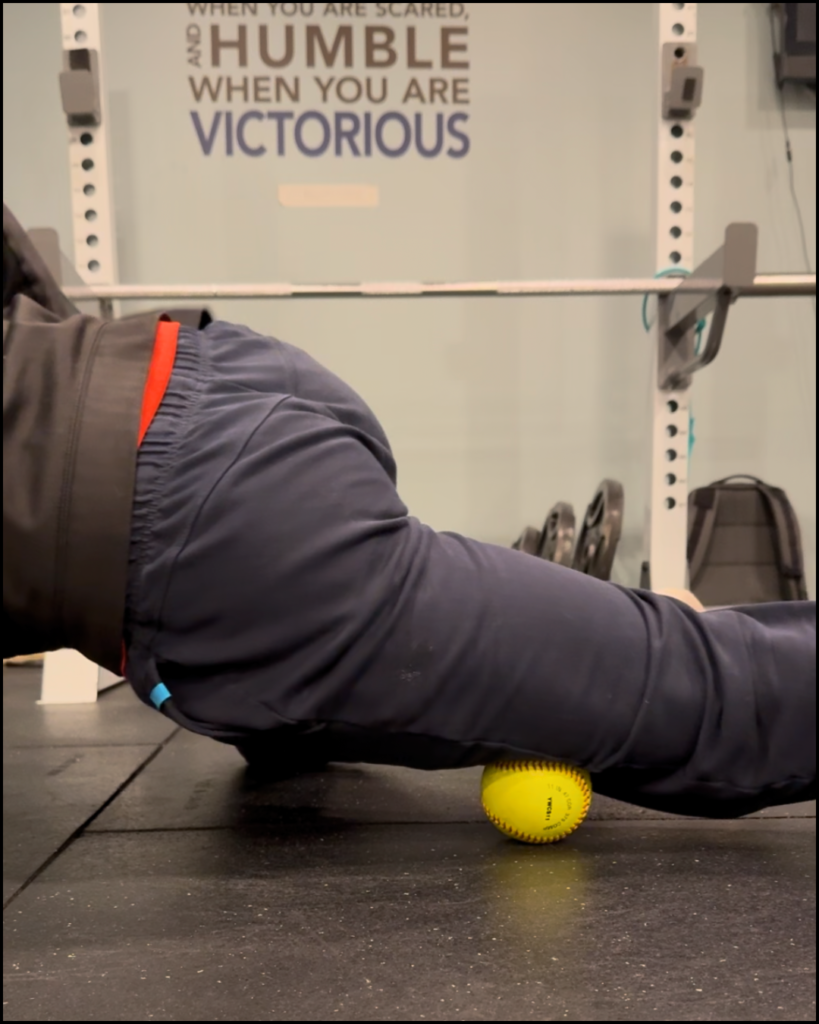
There are these tiny sensors throughout all of our muscle tissue that tell the muscle how far it can stretch. These “muscle spindles” can be temporarily deactivated through the use of pressure.
This makes it easy for stretching to occur in tight muscles so you can adapt your muscle!
These techniques also get the tight muscle to separate and break up adhesions which reduces current trigger points and developing ones.
Learn more with my Ultimate Guide to Trigger Point Therapy!
Mobility training, massage therapy and ART specialists
By keeping your muscles in a state where they can move through a full range of motion, you’ll be able to reduce muscle imbalances and keep trigger points away much easier.
Massage therapy is amazing because it lets you relax while a professional works through the knots with techniques that are best when others do it to you.
Active Release Technique (ART) is a targeted therapy where a chiropractor or massage therapist will pin the muscle as you put yourself into a stretched position.
The down side here and with ART specialists is that it can be expensive to get appointments.
That’s why I teach you to do with trigger point balls on all of my trigger point articles… but it is a lot of work to do it yourself.
This gives you an option to have somebody else do it for you instead.
Now What?
Now that you know all the areas that can give you trigger points in your legs, it’s time to get to the source of your leg pain.
Use my Body Guides to begin fixing your specific issues.
As always you can ask me questions below and I will get back to you ASAP!
Good Luck!
-Nick